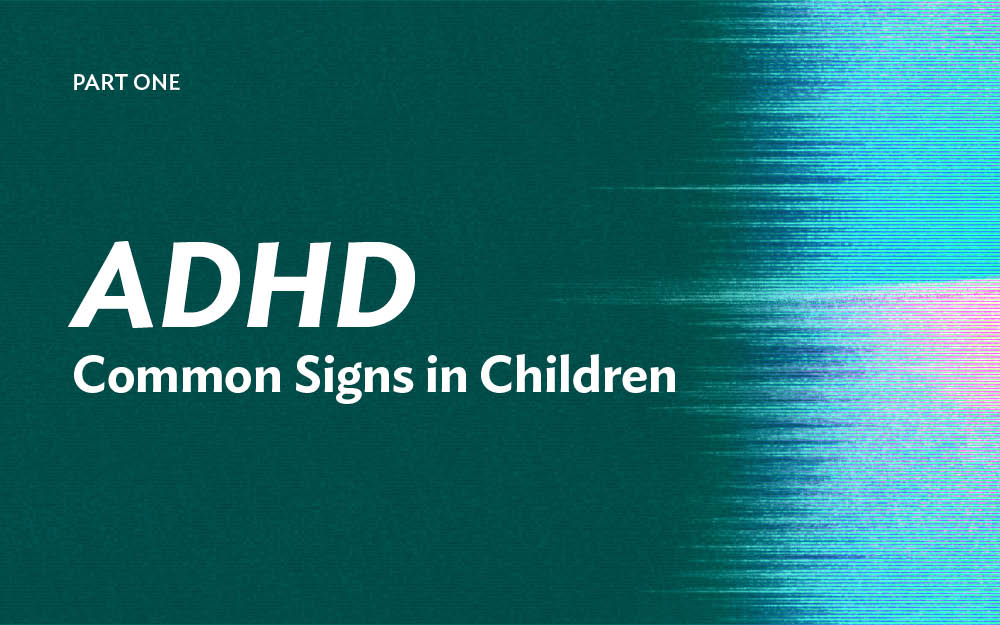By Amanda Heins, PsyD, supervising psychologist for Rogers Behavioral Health’s OCD and Anxiety Center Adolescent Residential Care in Wisconsin
Attention-deficit/hyperactivity disorder (ADHD) is a lifelong neurodevelopmental disorder that is estimated to impact 7 million children between the ages of 3 and 17. While awareness of ADHD among youth has increased, confusion remains as to what ADHD actually is.
In this series, we will:
- Provide clarity for what ADHD can look like in children and adolescents.
- Explore secondary mental health concerns that can arise.
- Share recommendations for parents and caregivers.
What is ADHD?
Since ADHD symptoms differ from person to person, it’s important to understand common signs. At the most basic level, ADHD symptoms fall into three content themes or subtypes:
- Inattention: Difficulty sustaining attention, easily distracted, may lose track of items or conversations.
- Hyperactivity: Difficulty remaining still, appearing to be driven by a motor.
- Impulsivity: Difficulty waiting, may interrupt others.
What does ADHD look like in children and teens?
In children and teens, symptoms of ADHD can look like:
- Being easily distracted (inattention). A student may be curious about what their peer sitting next to them is working on and can be thrown off task.
- Struggling to sustain attention (inattention). While a teacher is giving a lesson, a child’s thoughts take them on a journey and at times, they can stray far off course from the lesson. This is not done maliciously, rather kids are simply curious in the moment. Unfortunately, the timing of their curiosity (in this example) can negatively impact completion of the task, as the child missed essential information of the lesson.
- Lack of organization/losing things easily (inattention). For some youth, disorganization can be a sign of ADHD. As a result of “being in a rush” to recess or the bus or a practice, a child/teen’s backpack and/or bedroom can quickly look as though something exploded because items are everywhere. They probably all have a purpose, but the child/teen lacks a system to keep them organized and may have a hard time finding what they need when they need it.
- Appearing forgetful (inattention). Many kids with ADHD have challenges with time-management and/or hyperfocus, which means a child/teen becomes so immersed in what they’re doing that they lose track of time and what they should be doing next. For teens, this could include missing important deadlines or being late to work.
- Struggling to stay still (hyperactivity/impulsivity). Kids with ADHD tend to have “wiggles,” while adolescents may describe feeling “restless/antsy.” Both are describing the need to fidget and move around, so they may get up, touch, or grab things. This is called stimulation seeking. Kids look for something to do because their bodies have energy that they need to get out. Without a plan, stimulation seeking can be misunderstood and/or not match the present environment, which can lead to redirection and consequences.
- Driven by a motor (hyperactivity/Impulsivity). Many describe feeling a need to be “busy/on the go” and uncomfortable being still for long stretches of time.
- Challenges with “reading the room” (impulsivity). At the OCD Center, we notice kids/teens diagnosed with ADHD tend to disregard their surroundings as a source of information to inform their decisions (proactively). There are multiple reasons why this can happen. For some, it may be out of worry, like, “If I don’t tell you now, I will forget later,” while others could describe it as an urge to “say the thing” or “do the thing.” When kids/teens engage in frequent impulsive decisions/behaviors, it can have significant ripple effects on them socially, emotionally, academically, and more.
ADHD Diagnosis
Many people may be wondering, “Don’t most kids have an impulsive or forgetful moment from time to time?” Yes, they do. While many ADHD symptoms may resemble typical behaviors of children and teens during learning, an important difference is the frequency (how often are behaviors/symptoms occurring?) and severity (are they occurring in multiple settings?). Many times, teachers will be the first to identify symptoms, as the school environment can prove to be challenging for kids suspected of having ADHD. It’s important to communicate with your child’s teacher(s) if you suspect ADHD to compare what you’re seeing at home with what they’re seeing at school. While teachers are unable to formally diagnose ADHD, this collaboration will assist parents in collecting essential information to determine whether a formal evaluation is necessary.
Next in our series, we’ll look at secondary mental health concerns that can arise alongside ADHD and what parents and caregivers can do.
How Rogers can help
Our team of experts provides compassionate care for children and teens struggling with OCD, anxiety, depression and other moods disorders, eating disorders, and emotional dysregulation. Call 800-767-411 for a free, confidential screening.


